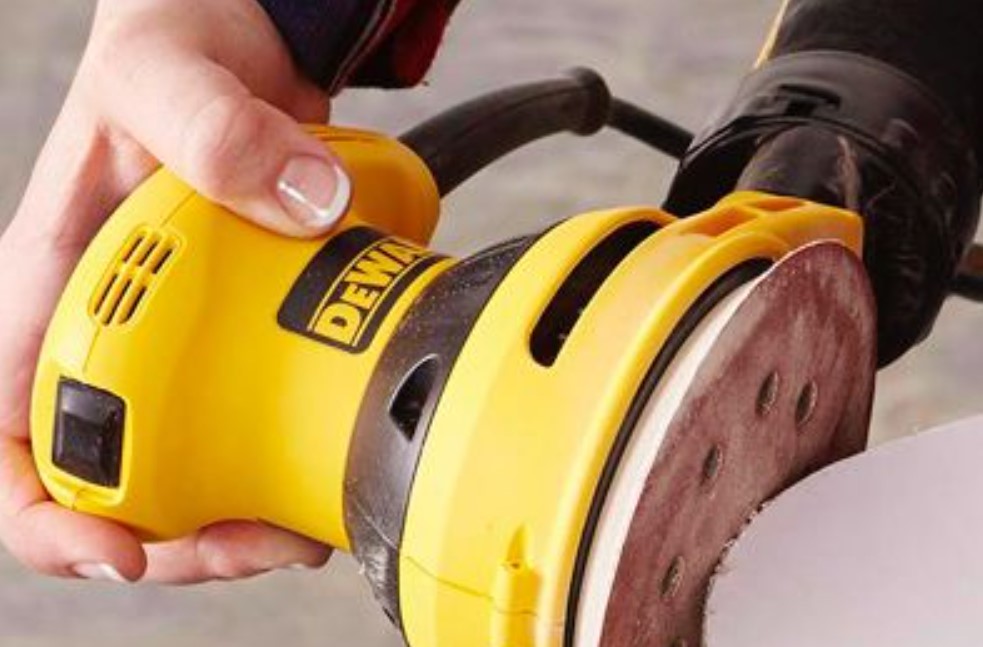How Can You Reuse Used Orbital Sand Paper?
Reusing your used orbital sandpaper is an excellent idea, especially if you are a professional carpenter looking to reduce waste and increase profits or an enthusiastic woodworker on a tight budget. If you have been doing DIY projects or been in the carpentry industry for a while, you probably understand that finding ways of reusing your sandpaper can be tricky.
While sanding is fun and a necessary part of woodworking, you understand that sandpaper doesn’t last forever. Even the best ones will eventually wear down, and it is best to find ways of extending their time, such as preventing it from getting too hot or cleaning it.
If you are keen on reusing your sandpaper, you should know what to expect, how well the reused sandpaper will work, and the tricks you will need to use. Read on to learn how to conserve sandpaper and reuse it.
Can You Clean Sandpaper for Reuse?
If you use a lot of sandpaper in your work line, you have probably noticed that they get used up quickly over time. Orbital sandpaper is not cheap, and if you are not careful, you might end up using a lot of money, making your profits shrink eventually.
You can clean and reuse sandpaper only if it is not gunked up with sawdust and old wood. It is essential to find an efficient way of removing the wood debris without causing any damage to the sandpaper if you intend to reuse it. Commercial solutions to help you clean your sandpaper are available; however, it is best to find cheaper and efficient cleaning methods to save costs and remove all gunk built on the sandpaper.
One of the efficient and cheapest ways of cleaning sandpaper entails soaking the sandpaper in water for a few hours before doing anything to it. When the hours elapse, you can gently brush the wood gunk off using a small steel brush. If you do this gently, you will get almost new sandpaper to serve your needs for a while. Let the sandpaper dry in the sun when you are happy with your efforts.
This little effort in cleaning your sandpaper for reuse means that you will have less waste, consume fewer materials, incur fewer costs, and make more profit if you are in business. If you are doing DIY projects, cleaning sandpaper for reuse will mean that you will finish the projects using minimal costs.
How Do You Revive Sandpaper?
Sandpaper often gets gunked up with sawdust unless you clean it regularly. When the sandpaper is gunked up, it becomes less effective and slows down your work. The good news is that you can quickly revive your sandpaper using an old tennis shoe.
Ideally, you require a sandpaper saver or a sanding belt cleaner to clean your sandpaper and increase its abrasive life. Cleaning your sandpaper often improves its finish quality, increases its abrasive life, and minimizes the probability that your sandpaper will cause any markings on the items you are sanding or gum up in the process.
Do not fret if you don’t have a sandpaper saver or do not want to buy one. You can always use the bottom of an old tennis shoe to revive sandpaper. All you have to do is to apply the shoe’s rubber sole to your sandpaper while the sand is running to allow it to clean out the entire gunk, leaving the sandpaper looking almost brand new.
You can also clean your sandpaper using plastic collected from garbage. Bunched up plastic foil and plastic bottles may be great for reviving your sandpaper. You can pull out some plastic; wrap it around the edge of a container while ensuring that your fingers are out of the way. Once done, hold the container against the spinning or running sanding surface.
How Many Times Can You Reuse Sandpaper?
Sanding contributes to the final look and feel of your finished project. Your finished project will show if your sandpaper gets worn down. Every situation is different, and there is no set standard time regarding how many times you can reuse your sandpaper. However, some telltale signs will indicate that your sandpaper cannot be reused any more.
One of the easiest ways to tell that it’s time to change your sandpaper after several reuses is to run your finger lightly over the part you have been using the most (especially if it’s on a sheet sander). You can repeat the procedure over a relatively new part that isn’t worn out despite several reuses. If there is a notable difference between the smooth old part and the rough new part, then it might be time to stop reusing your sandpaper.
If you are wet sanding, you will probably use sandpaper once before it begins to crease and eventually lose its flat shape.
If you love DIY Projects but have a tight budget or are in the carpentry business and looking to save costs, then reusing sandpaper might be the way to go. Be keen to identify when the sandpaper cannot be reused anymore if you want to have an excellent finished project.


